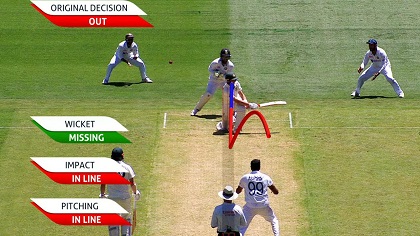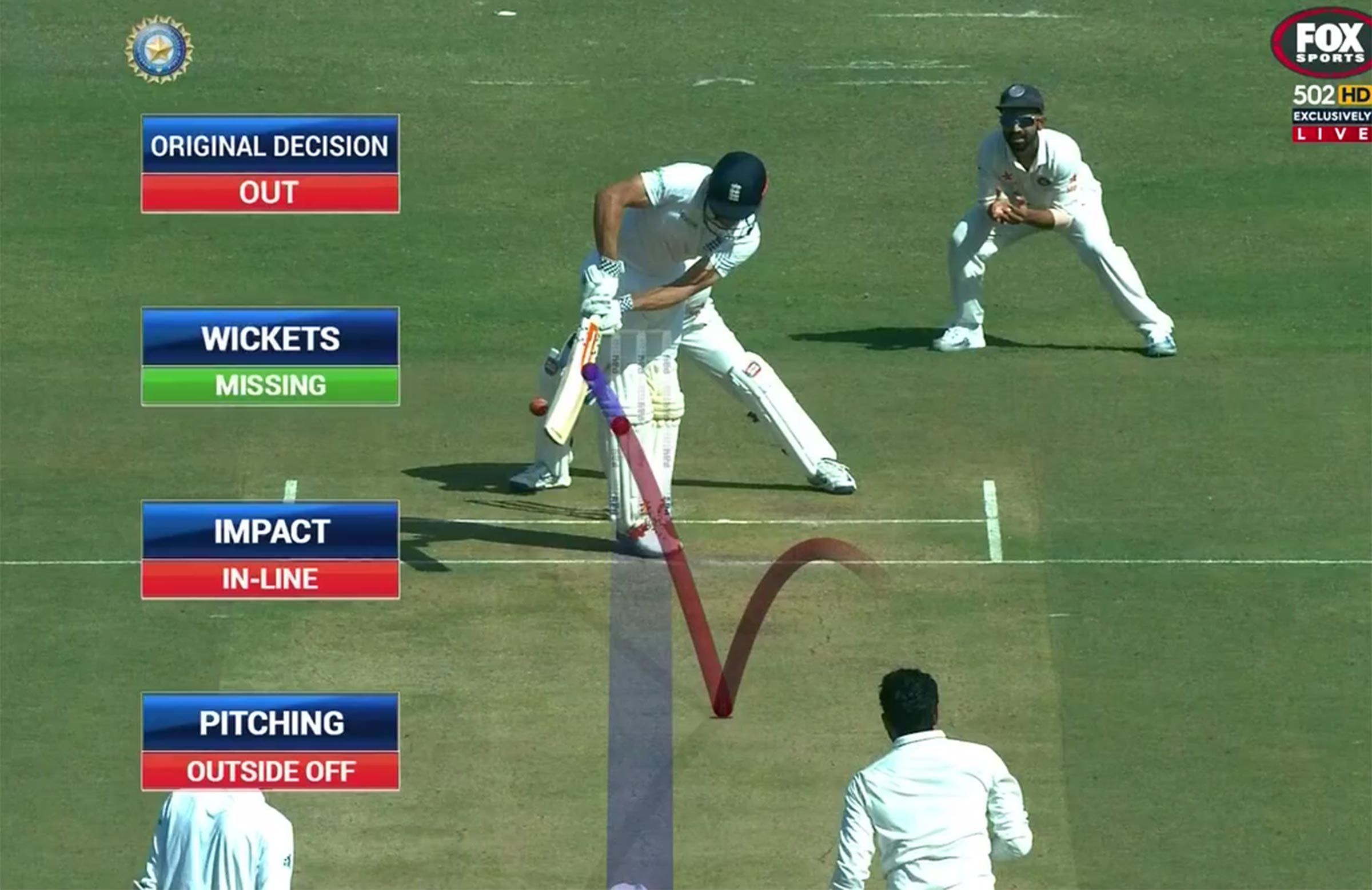In the thrilling world of cricket, every run, every wicket, and every decision can make a significant difference in the outcome of a match. One of the most crucial innovations in this sport is the Decision Review System (DRS). As an ardent cricket fan, I’ve followed the evolution of DRS closely, and I believe understanding this system is essential for anyone who loves the game. This guide will take you through the intricacies of DRS in cricket, explaining how it works, its benefits, and its impact on the game. So, grab your favorite beverage, settle in, and let’s explore the fascinating realm of DRS in cricket!

What is DRS in Cricket?
The Decision Review System (DRS) is a technology-based system used in cricket to assist umpires in making more accurate decisions. Introduced in 2008, DRS aims to minimize human error in crucial match moments. The system allows players to challenge on-field umpire decisions, particularly in cases of dismissals and boundary calls.
I remember watching a nail-biting match where the DRS played a pivotal role. A crucial LBW decision was overturned after the bowler’s team reviewed it, showcasing how technology can change the course of a game. This system has become an integral part of modern cricket, ensuring fairness and accuracy.
How DRS Works
The DRS operates through a combination of technologies, including:
- Ball Tracking: This technology, often referred to as Hawk-Eye, tracks the ball’s trajectory and predicts its path after being bowled. It’s particularly useful for LBW decisions, as it shows whether the ball would have hit the stumps.
- UltraEdge: Also known as Snickometer, this technology detects any contact between the bat and the ball. It captures sound waves and visual images to determine if there was an edge leading to a catch.
- Thermal Imaging: This technology is used to detect any contact between the bat and the ball, providing a visual representation of the impact.
- Replays: High-definition replays are used to analyze boundary decisions, ensuring that the ball did not touch the boundary line.
The Process of Using DRS
When a team feels that an on-field decision is incorrect, they can initiate a review. Here’s a step-by-step breakdown of the process:
- Initiation of Review: The captain or the player signals for a review by making a “T” shape with their hands.
- Umpire Consultation: The on-field umpire reviews the decision and consults with the third umpire.
- Technology Utilization: The third umpire uses the available technologies (Hawk-Eye, UltraEdge, etc.) to analyze the situation.
- Final Decision: After reviewing the evidence, the third umpire communicates the final decision back to the on-field umpire, who then relays it to the players.
Benefits of DRS
The introduction of DRS has brought several benefits to the game:
- Enhanced Accuracy: DRS significantly reduces the chances of human error, leading to fairer outcomes.
- Player Confidence: Players are more confident in their appeals, knowing they have the option to review a decision.
- Spectator Engagement: The use of technology adds an element of excitement for spectators, who can see the analysis unfold in real-time.
- Improved Umpiring Standards: Umpires can make decisions with the support of technology, leading to a higher standard of officiating.
Common Misconceptions about DRS
Despite its advantages, there are several misconceptions about DRS that I’ve encountered:
- DRS is Always Accurate: While DRS improves accuracy, it’s not infallible. The technology can sometimes produce inconclusive results.
- Teams Have Unlimited Reviews: Each team is allowed only a limited number of unsuccessful reviews per innings. This limitation encourages strategic use of reviews.
- DRS is Only for LBW Decisions: DRS can be used for various types of decisions, including catches and boundary calls.
- All Umpires Support DRS: Not all umpires are in favor of DRS, as some prefer traditional decision-making. However, the trend is shifting towards acceptance of technology.

The Evolution of DRS
The journey of DRS has been fascinating. Initially met with skepticism, it has evolved significantly since its inception. Here’s a brief timeline of its evolution:
- 2008: DRS was first introduced during a Test match between India and Sri Lanka.
- 2011: The system was refined to include ball tracking and UltraEdge technology.
- 2016: DRS was made mandatory for all Test matches, emphasizing its importance in the game.
- 2020: The ICC introduced the concept of “umpire’s call,” allowing for more subjective decisions to be reviewed.
DRS in Different Formats of Cricket
DRS is utilized differently across various formats of the game:
- Test Matches: DRS is used extensively in Test matches. Teams have two unsuccessful reviews per innings.
- One Day Internationals (ODIs): In ODIs, teams have one unsuccessful review per innings.
- T20 Matches: DRS is often not used in T20 matches, primarily due to the fast-paced nature of the game and the limited time available for reviews.
Real-Life Examples of DRS in Action
I’ve seen several memorable instances where DRS changed the course of a match. One such moment was during the 2019 Cricket World Cup semi-final between India and New Zealand. A crucial LBW decision against Indian batsman Rohit Sharma was overturned after a successful review, showcasing the impact DRS can have on high-stakes matches.
Another memorable instance was during the 2021 Ashes series, where Australia’s Pat Cummins successfully reviewed a caught-behind decision. The technology confirmed that there was no edge, allowing Cummins to continue his spell.

Frequently Asked Questions about DRS in Cricket
What happens if a team runs out of reviews?
If a team exhausts its reviews, it cannot challenge any further decisions for the remainder of the innings.
Can the third umpire overrule the on-field umpire?
Yes, the third umpire can overrule the on-field umpire based on the evidence provided by technology.
Is DRS used in all international matches?
While DRS is mandatory in Test matches, its use in ODIs and T20s varies. Some tournaments may choose to implement DRS, while others may not.
How is the “umpire’s call” decision made?
The “umpire’s call” decision applies when the ball tracking shows that the ball would have hit the stumps, but the impact is outside the line of off-stump. In such cases, the on-field decision stands.
Are there any limitations to DRS?
Yes, DRS has limitations, including the inability to review certain decisions, such as no-balls (unless specified) and decisions made by the on-field umpires without a review request.

Conclusion
The Decision Review System has transformed the way cricket is played and officiated. By integrating technology into the decision-making process, DRS has enhanced the accuracy and fairness of the game. As a cricket enthusiast, I appreciate how DRS has added a layer of excitement and engagement for fans and players alike.
I encourage you to keep an eye on how DRS continues to evolve and impact future matches. Whether you’re a player, a fan, or simply curious about the game, understanding DRS will deepen your appreciation for cricket. If you want to learn more about cricket technology and its implications, feel free to explore additional resources or leave a comment below!

Mayank Chaudhary is a former Indian domestic cricketer, now working as a cricket analyst. With years of on-field experience and deep insight into the dynamics of the game and the world of cricket betting, he now shares his expertise to help fellow cricket enthusiasts make smarter, more informed bets. Learn more on the About Me page.

